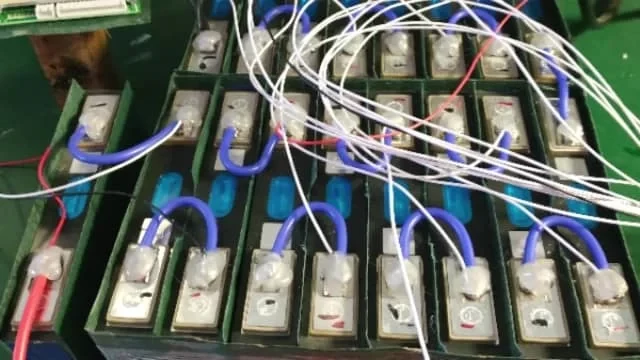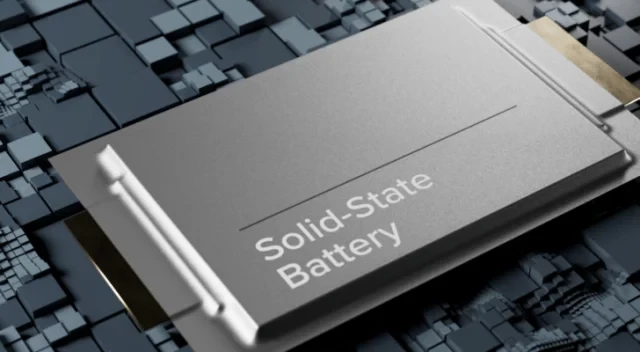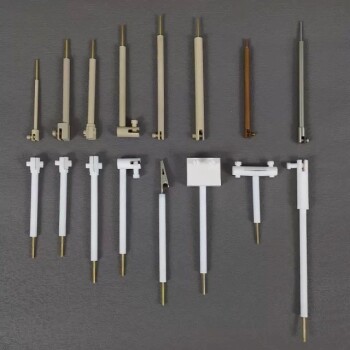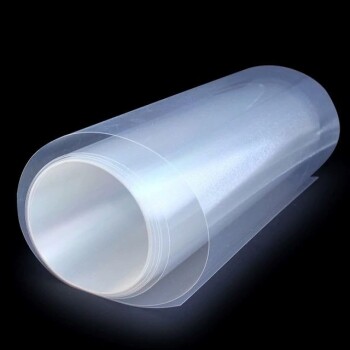Introduction to Innovations in Electrochemical Technology
Electrochemical technology has been an essential part of our lives for decades, from batteries and fuel cells to sensors and corrosion protection. Recent advancements in nanotechnology and materials science have led to significant improvements in electrochemical devices, making them more efficient, durable, and cost-effective. These innovations include the use of nanomaterials and nanostructures in biosensors, solid-state electrolytes in batteries, and AI and machine learning in electrolyte research. Moreover, the development of new electrode materials and electrolysis techniques has led to the creation of sustainable energy storage systems, such as supercapacitors and hydrogen fuel cells. As the demand for clean and renewable energy continues to grow, electrochemical technology will play a crucial role in meeting society's energy needs.
Table of Contents
- Introduction to Innovations in Electrochemical Technology
- Importance of Electrochemical Devices for Energy Storage
- Supercapacitors as Intermediate Devices
- Use of AI and Machine Learning in Electrolyte Research
- Electrodes and Batteries for Energy Conversion
- Electrolysis and Differentiation of Substances
- Quinhydrone electrode for hydrogen ion concentration
- Future Developments
Importance of Electrochemical Devices for Energy Storage
Electrochemical devices have become an essential part of energy storage systems due to their efficiency, reliability, and cost-effectiveness. They are widely used in a range of applications, from portable electronics to grid-scale energy storage. As the demand for sustainable energy solutions increases, innovations in electrochemical electrodes technology are critical in the development of more efficient and reliable energy storage systems that are essential for powering the modern world while reducing our carbon footprint.

Electrochemical Devices for Large-Scale Energy Conversion and Storage Applications
Electrochemical devices are being developed for large-scale energy conversion and storage applications. These devices have the advantage of performing direct conversion from fuel to electricity, thus avoiding Carnot cycle losses. However, the reliability and overall efficiency are not sufficiently high to displace current thermal-cycle technology. One source of inefficiency stems from the inability of fuel cells to use hydrocarbons directly. The irreversibility associated with using available hydrocarbons, such as ethylene, is a severe limitation. Moreover, oxygen reduction is also a difficult process to catalyze. Most fuel-cell systems currently under development require hydrogen at the anode, as electrode kinetics are much more favorable. Conversion of common fuels to hydrogen requires a processing step, which lowers the overall efficiency.
Electrochemical Devices for Large-Scale Energy Storage
Large-scale energy storage is being considered for electric utility load leveling. In this scheme, electrical energy produced during off-peak hours is stored in a secondary (rechargeable) battery and is released back into the grid during peak-demand periods. The main advantage of this mode of operation is that additional capital expenditures, required for peak-load generation equipment, can be avoided. For commercial adoption, the economics of the storage system must be advantageous. Currently, the cycle life of most systems is inadequate. A commercial system would need to be capable of a minimum of 2500 cycles or about 10 years of continuous service. The lead–acid battery can meet this goal, but capital costs for that system are too high to compete with conventional load-following technology.
Electrochemical Devices for Transportation Applications
Electrochemical devices have many advantages that make them attractive for transportation applications. Most electrochemical power sources are pollution-free, quiet, and efficient. These attributes, especially efficiency, have made fuel cells ideal electrical power sources for manned spacecraft. Urban transportation is a large-scale application in which similar attributes are desirable. For stationary systems, device weight is not an important consideration. By contrast, energy per unit weight (specific energy) and power per unit weight (specific power) are of prime importance in the design of systems for transportation uses.
Electrochemical Devices for Energy Storage - Supercapacitors
Electrochemical devices for energy storage play a crucial role in the energy-dependent world for meeting the situation of fast depletion of fossil fuels. Among various possible electrochemical energy storage devices, supercapacitors have been attracting interest in both academic community and industrial production in the past few decades due to their desirable power density, fast charge/discharge rates, and favorable life cycles. Supercapacitors and rechargeable batteries are similar devices with negative electrodes, positive electrodes, and separators that are present with an electrolyte. Normally, supercapacitors can be considered as the intermediate between the conventional battery and dielectric capacitor. In these days, supercapacitors are employed in many applications, such as consumer electronics, possibly in transportation, grid balancing, and power back up replacing the use of batteries in these applications. Supercapacitors can also be used along with rechargeable batteries to provide additional power that is normally required in these applications.
In conclusion, electrochemical devices have become a critical component in the development of more efficient and reliable energy storage systems that are essential for powering the modern world while reducing our carbon footprint. Innovations in electrochemical electrodes technology have enabled the creation of more efficient, reliable, and cost-effective energy storage systems, which are essential for the transition to a greener and more sustainable future.
Supercapacitors as Intermediate Devices
Supercapacitors are energy storage devices that have become increasingly popular in recent years. These devices have high power density, long cycle life, and can be charged and discharged quickly, making them an attractive alternative to traditional batteries and capacitors. Supercapacitors can be used in a wide range of applications, including electric vehicles, renewable energy systems, and portable electronic devices.

What are Supercapacitors?
Supercapacitors are also known as ultracapacitors or electrochemical capacitors. They store energy electrostatically, using two electrodes separated by an electrolyte. The electrodes are usually made from activated carbon, which has a high surface area to maximize the amount of charge that can be stored. The electrolyte is usually an organic solvent or an ionic liquid that allows ions to flow between the electrodes.
Advantages of Supercapacitors
Supercapacitors have several advantages over traditional batteries. They can be charged and discharged more quickly, which is essential in applications where rapid charging is required. They also have a longer cycle life than batteries, which means they can be charged and discharged many more times before they need to be replaced. Additionally, they have a high power density, which means they can deliver a lot of power in a short amount of time.
Applications of Supercapacitors
Supercapacitors are used in a wide range of applications, including:
- Electric vehicles: Supercapacitors can be used in hybrid electric vehicles (HEVs) and electric vehicles (EVs) to provide rapid acceleration and regenerative braking.
- Renewable energy systems: Supercapacitors can be used in renewable energy systems, such as solar and wind power, to store excess energy and release it when needed.
- Portable electronic devices: Supercapacitors can be used in portable electronic devices, such as smartphones and laptops, to provide rapid charging and longer battery life.
Future of Supercapacitors
The development of new materials and manufacturing techniques has led to the production of supercapacitors with improved performance and reduced cost. Additionally, the use of supercapacitors in combination with other energy storage devices such as batteries can enhance the overall performance and efficiency of energy systems. As the demand for energy storage and conversion devices continues to grow, the innovations in electrochemical electrodes technology, particularly supercapacitors, will play a crucial role in meeting these demands.
Use of AI and Machine Learning in Electrolyte Research
Recent advancements in AI and machine learning have significantly improved the design and optimization of electrochemical electrodes. Electrolyte research has also benefited greatly from these innovations, as AI algorithms can now predict the behavior of electrolytes and their interactions with electrodes at the molecular level.

Predicting Electrolyte Behavior
AI algorithms can predict the behavior of electrolytes and their interactions with electrodes at the molecular level. This has led to the development of new electrolytes with improved performance and stability, which have in turn led to the creation of highly efficient electrochemical devices.
Development of New Electrode Materials
The use of AI and machine learning in electrochemical electrode technology has allowed for the development of new electrode materials with improved properties, such as higher conductivity, better durability, and increased selectivity. This innovation has enabled the development of novel electrochemical devices that can operate in extreme environments, such as high temperature, high pressure, and corrosive conditions.
AI in Electrolytic Cell
An electrolytic cell is an electrochemical cell that drives a non-spontaneous redox reaction with electrical energy. AI can be used to optimize the performance of the cell by predicting and controlling the behavior of the electrolyte and the electrodes.
Improving Selectivity
AI and machine learning have enabled the suppression of side reactions that are enabled by the different overpotentials for each process on different electrode materials. A low overpotential for the desired redox reaction will not only ensure the reaction can be driven more efficiently but will improve selectivity over competing processes.
Importance of Electrode Stability
The stability of an electrode is important for ensuring longevity of use. However, the stability of the substrate or the intermediates produced on the electrode is also important for ensuring high yields of product. A compound can irreversibly bind and decompose on the surface, leading to a decreased mass balance and yield of product.
In conclusion, the use of AI and machine learning in electrolyte research has significantly improved the performance, efficiency, and durability of electrochemical electrodes. These innovations promise to revolutionize the field in the near future.
Electrodes and Batteries for Energy Conversion
Electrodes play a crucial role in electrochemical processes, which are used in various energy conversion applications such as fuel cells, batteries, and electrolyzers. In recent years, there have been significant innovations in electrochemical electrode technology, especially in the development of electrodes and batteries for energy conversion.

Nanostructured Materials
The development of advanced materials for electrodes has been driven by the need for improved performance, stability, and durability. One such innovation is the use of nanostructured materials, which have a high surface area and can enhance the electrode's performance. Nanostructured materials are materials that have structures on the nanometer scale, typically between 1 and 100 nm. They have unique properties due to their small size, such as high surface area, increased reactivity, and improved mechanical properties.
Graphene-Based Materials
The use of graphene-based materials has been shown to improve the electrode's electrical conductivity, which is essential for efficient energy conversion. Graphene is a two-dimensional material made of carbon atoms arranged in a hexagonal lattice. It has excellent electrical and thermal conductivity, high mechanical strength, and a large surface area.
Advanced Manufacturing Techniques
Another critical development is the use of advanced manufacturing techniques, such as additive manufacturing, which allows for the production of complex electrode geometries with high precision. Additive manufacturing, also known as 3D printing, is a process of building objects by layering material, such as plastic or metal, one layer at a time. It allows for the creation of intricate shapes and structures that would be difficult or impossible to produce using traditional manufacturing methods.
High-Performance Batteries and Fuel Cells
These innovations have led to the development of high-performance batteries and fuel cells, which have the potential to revolutionize the energy industry. Batteries are devices that convert chemical energy into electrical energy, while fuel cells convert chemical energy directly into electrical energy. Both have important applications in energy storage and conversion.
In conclusion, the advancements in electrochemical electrode technology are promising for the development of more efficient and sustainable energy conversion systems. The use of nanostructured and graphene-based materials, as well as advanced manufacturing techniques, has led to the development of high-performance batteries and fuel cells that have the potential to transform the energy industry.
Electrolysis and Differentiation of Substances
Electrolysis is the process by which electric current is passed through a substance to effect a chemical change. The substance to be transformed may form the electrode, may constitute the solution, or may be dissolved in the solution. The process is carried out in an electrolytic cell, an apparatus consisting of positive and negative electrodes held apart and dipped into a solution containing positively and negatively charged ions. The electrolytic cell consists of three main components – battery, electrodes, and electrolyte. The battery functions as the power source. It provides the electrical energy to bring about the chemical change, i.e., the decomposition of the ionic compound. The electrode may be a sheet, a wire, or a rod. They are of two types – anode and cathode.
In electrolytic cells, we use a direct current power source, meaning that the electrodes are always either positive or negative. Anions in the electrolyte travel toward the anode and are oxidized. Cations in the electrolyte travel toward the cathode and are reduced. During electrolysis, the anions are attracted to the positive electrode where they lose electrons to form atoms or molecules. The electrons flow to the positive terminal of the battery, then to the negative terminal before entering the electrolyte through the cathode. At the negative electrode, the cations in the electrolyte are attracted to it, where they receive or gain electrons to also form atoms or molecules.
Innovations in electrochemical electrode technology have significantly enhanced the precision and accuracy of electrolysis processes. Electrochemical electrodes are essential in the electrolysis process as they facilitate the transfer of electrons between the anode and cathode. Recent advancements in electrode technology have led to the development of differentiated electrodes that enable the separation of different substances based on their unique properties. Differentiated electrodes can separate substances based on their size, charge, and chemical nature.
For instance, porous electrodes can separate substances based on their size, while ion-selective electrodes can differentiate between charged substances. Such innovations have significantly improved the efficiency of electrolysis, reducing the energy consumption and cost of production. Electrode technology is continually evolving, and researchers are continually exploring new ways to improve the efficiency and precision of electrolysis processes.
Electrolysis is used extensively in metallurgical processes, such as in extraction or purification of metals from ores or compounds and in deposition of metals from solution. Metallic sodium and chlorine gas are produced by the electrolysis of molten sodium chloride. The electrolysis of an aqueous solution of sodium chloride yields sodium hydroxide and chlorine gas. Hydrogen and oxygen are produced by the electrolysis of water.
In conclusion, innovations in electrode technology have made electrolysis more accessible to industries, leading to the development of new products and processes that were previously impossible. As the demand for cleaner and more sustainable production processes increases, innovations in electrode technology are expected to play a pivotal role in shaping the future of electrolysis.
Quinhydrone electrode for hydrogen ion concentration
Electrochemical electrodes are essential components in many laboratory applications, including pH measurement. The quinhydrone electrode is a type of electrochemical electrode that has been developed for measuring hydrogen ion concentration in aqueous solutions.
What is a quinhydrone electrode?
The quinhydrone electrode is made from a mixture of quinone and hydroquinone, which are both redox-active compounds. The hydrogen ion concentration is determined by measuring the potential difference generated between the quinhydrone electrode and a reference electrode.
Advantages of quinhydrone electrode
The quinhydrone electrode is highly sensitive, stable, and relatively inexpensive compared to other types of electrodes. It also has a wide measurement range, making it suitable for use in a variety of applications. Innovations in quinhydrone electrode technology have led to improvements in electrode design, materials, and manufacturing processes. These developments have resulted in electrodes that are more durable, accurate, and reliable.
Applications of quinhydrone electrode
The use of quinhydrone electrodes has helped to advance research in areas such as environmental monitoring, biomedical research, and industrial applications. With ongoing research and development in electrochemical electrodes, innovations such as the quinhydrone electrode will continue to contribute to advancements in laboratory technology and science.
In conclusion, the quinhydrone electrode is an important tool in laboratory research for measuring hydrogen ion concentration. It has several advantages over other types of electrodes, including its sensitivity, stability, and affordability. Innovations in quinhydrone electrode technology will continue to improve its accuracy and reliability, making it an even more valuable tool for scientific research.
Future Developments
As research continues in this area, we can expect to see even more exciting developments in electrochemical electrode technology in the years to come. The development of new electrode materials, fabrication methods, and intermediates will continue to push the boundaries of electrochemical applications, making them more accurate, reliable, and efficient.
In conclusion, enhancing the stability of electrochemical electrodes is crucial to ensure accurate and reliable results in various scientific fields. Researchers continue to explore new materials, fabrication methods, and intermediates to improve the durability of electrodes and optimize their performance. Their efforts will continue to advance the field of electrochemistry, leading to exciting new developments in the future.
Related Products
- Thin-Layer Spectral Electrolysis Electrochemical Cell
- Electrolytic Electrochemical Cell for Coating Evaluation
- Rotating Platinum Disk Electrode for Electrochemical Applications
- Metal Disc Electrode Electrochemical Electrode
- Electrode Fixture for Electrochemical Experiments
Related Articles
- Understanding Flat Corrosion Electrolytic Cells: Applications, Mechanisms, and Prevention Techniques
- Advanced Electrolytic Cell Techniques for Cutting-Edge Lab Research
- Applications of H-Type Electrolytic Cell in Metal Extraction
- Applications of Electrolytic Cells in Purification and Electroplating
- The Future of Electrochemical Electrodes















